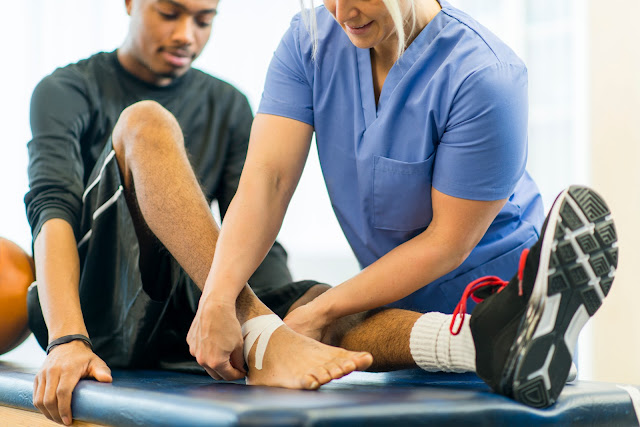A Comprehensive Guide To Sports Injury Treatment And Rehabilitation
To prevent sports injuries, it's important to take the proper precautions. For instance, warming up and cooling down before and after your workout session will help prevent injuries. However, there are some injuries that are unavoidable even with proper preparation—and luckily, there are ways to treat them as well! Learn more about these common sports injuries:
Types of Sports Injuries and How They Happen
There are two main types of sports injuries: acute trauma and overuse injuries. And sports injury treatment and management for acute trauma occurs when there is a direct blow or impact that causes damage to the body. This can happen during a game or practice, for example, if you fall and land on your arm.
Overuse injuries occur when you repeatedly use muscles in an unhealthy way over time, which can be caused by improper training techniques or bad equipment choices (such as shoes). For example, if your shoes don't fit correctly and cause pain in your feet while running around during practice sessions every day, this could lead to an injury like shin splints or plantar fasciitis down the road.
Common Sports Injuries
Sports injuries are one of the most common types of injuries. However, there are some ways you can prevent them from happening. Below is a list of common sports injuries and how you can avoid them:
- Sprain or strain - When a ligament is stretched beyond its normal range of motion, it may become strained or sprained. If your knee hurts while running or jumping, this could be an indication that you have strained your ACL (anterior cruciate ligament). An easy way to prevent this type of injury is by wearing ankle braces when playing sports such as basketball and soccer where players tend to land on their feet after jumping/landing from high heights.
- Fracture - A fracture occurs when there is damage done inside bone tissue due to either direct impact or twisting motions which causes cracks in bones around joints like ankles & wrists leading up into arms & shoulders respectively; resulting in severe pain at injured area along with swelling around same area depending on severity level experienced!
Common Causes of Sports Injuries
- Poor conditioning
- Poor technique
- Inadequate equipment and facilities, including poorly maintained fields or courts. * Inadequate supervision (e.g., not having a coach to teach you how to play)
How to Treat a Sports Injury
After you've identified the cause of your injury, it's time to start treating it. While every case is different and will require different kinds of treatments, there are some general guidelines for treating sports injuries that can help guide you through the process.
Resting an injured body part is one of the most important things you can do in order to let to do sports injury treatment properly. This means taking time off from physical activity, even if that means missing a few games or practices with your team until the pain goes away completely (or at least subsides enough).
If you're still experiencing soreness after resting for several days--and especially if there's any swelling around where you were injured--it may also be wise to see a doctor who can prescribe medication as needed (like anti-inflammatory drugs), perform further tests on your body part(s) using X-rays or other imaging techniques, and advise on whether further treatment through physical therapy would be advisable before returning back into action again; however this should only happen after consulting with said physician first!
Conclusion
We hope that this article has helped you understand the basics of sports injuries and how to treat them. While it's easy to get discouraged when dealing with an injury, remember that it is just one part of your overall health and fitness. Don't let it keep you from working towards achieving your goals!




Comments
Post a Comment